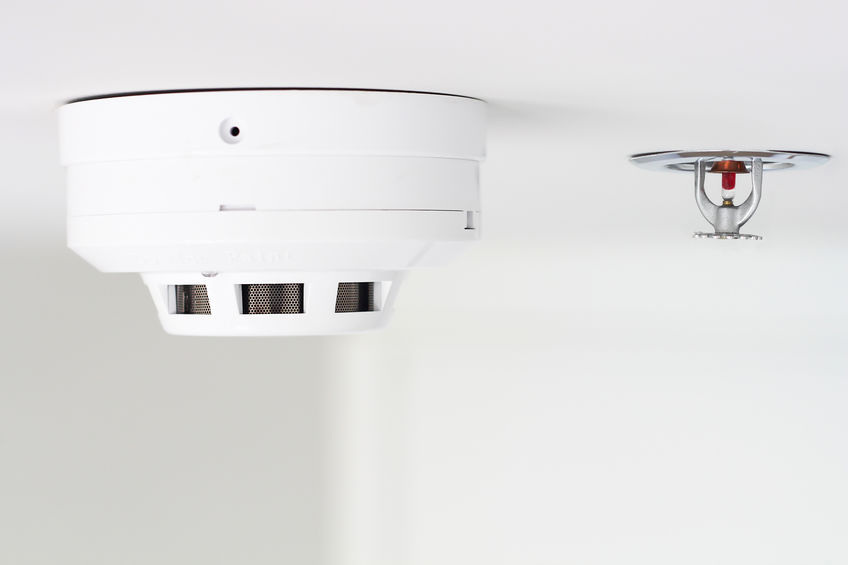What’s a kitchen range hood fire suppression system
However, because of the nature of cooking in the restaurant, some important protection is needed in or around the cooking appliances. As per specific national statistics, in a typical year, 5,100 fires are started by cooking appliances. Given that 20 percent of fires are officially reported; the number may be higher.

In the event of fire over the cooking appliances as well as in the ductwork, the first line of defense is the fire suppression system. Engaging the manual pull station may activate the fire system and more often, the system will automatically discharge when the fire reaches a specific temperature. The discharge of the system will shut off the gas and turn off any electrical appliances. The kitchen needs to have a K-Class type portable fire extinguisher, which is designed for use over cooking surfaces. Activating the system first in this condition is contrary to what’s taught about portable fire extinguishers being the first choice in the event of a fire. You should not try to fight a cooking tool fire with a portable fire extinguisher without first discharging the system.
In basic terms, the automatic system works as follows: the rise in the intensity of the fire sets off fusible links that are designed to snap in half at a specific temperature. This separation of the link(s) triggers the actuation mechanism, which releases the contents of the system cylinder via piping and nozzles. The wet chemical agent discharges into the plenum and duct area as well as onto the cooking appliances, efficiently knocking down the fire and coating the surface. This coating will assist saponification, and it is a cooling down of the cooking median that will prevent re-ignition. Once the system is activated and done its job, restaurant personnel call their authorized fire suppression contractor. The system cylinder must be recharged as well as the system must be put back into service.
The restaurant must never start cooking again without the system in appropriate working order, as it can’t operate without appropriate protection. Before a fire situation occurs, it’s essential that the restaurant has put into place a proactive approach to fire safety. This approach, as it relates to kitchen range hood fire suppression systems, need to begin upon either moving into an existing space or building a new restaurant. The general contractor and also your maintenance, facilities department will provide plans for the kitchen to a licensed kitchen range hood fire suppression contractor. The contractor will then propose the size and type of system required and what’s needed by the local AHJ in terms of drawings, permits, and witnessing performance tests prior to opening.
The AHJ will follow the guidelines set forth in the National Fire Protection Association (NFPA) Standard for Wet Chemical Fire Extinguishing Systems, NFPA-17A, UL-300, and specifications of the manufacturer. The layout of a specific appliance line and duct system will determine the amount of protection needed. With the advent of UL (Underwriter’s Laboratories)-300 in 1994, there’s one type of extinguishing agent discovered in fire suppression systems: alkaline-based wet chemical. The UL-300 standard was created to meet the new kinds of appliances and the high-temperature cooking oils. It made the old dry type systems obsolete.
Some AHJ’s allowed the dry systems to stay in place unless either the cooking appliance line or duct system was changed or the system came due for hydro-testing. UL identified the need for a safer and more reliable fire-extinguishing agent based on the wish for healthy vegetable cooking oil and the improvement on the power generated by the standard kinds of appliances. With this in mind that your kitchen fire suppression contractor needs to be following the specifications of UL-300 not for new installations, but when servicing existing systems.
As part of the proactive fire safety approach, it’s essential that the restaurant has put a training program in place for managers as well as other associates on how to appropriately use the fire suppression system and fire extinguishers. This info should be passed on to every new employee. Your fire suppression contractor can help you in providing the proper learning materials for such a program.
Benefits of Kitchen range hood Fire Suppression Systems
It is much less expensive to prevent kitchen fires than for repairing structural damage after a fire. For this reason, some business owners appreciate the security that comes from installing a fire suppression system. Not are you capable of protecting your occupants of the building, but you’re restricting fire damage to an individual cooking surface.
Absolute safety – A wet chemical kitchen hood fire suppression system may be installed in kitchens of every size and its fast fire-extinguishing features offer absolute safety.
Effective protection – The kitchen range hood fire suppression system is super-fast in detecting and diffusing a fire.
Environment-Friendly – The clean chemical fire suppression systems are very environment-friendly and do not lead to ozone layer depletion.
Safety and the prevention of loss of life shall be the 2 some important problems. Therefore, kitchen range hood fire suppression systems are intended to put out a fire in its initial stages. No store worker should try to put out a fire that’s blazing. Fires spread rapidly and the smoke, as well as gases emitted from the fire, maybe toxic. If there’s any doubt about the employee’s capability to put out the fire, he or she should back out of the store exit instantly, trying to close the door behind them to limit spreading the fire, then wait for the local Fire Department to arrive.
